Gun Owners Looking for a New Political Home After BBB Betrayal — Could Elon’s “America Party” Be It?

After the betrayal of gun owners in the Senate’s so-called “Big Beautiful Bill” (BBB), grassroots Second Amendment advocates are fed up — and many are now asking a question that would have been unthinkable just a year ago: Is it time for gun owners to leave the Republican Party? And with tech mogul Elon Musk […]
Colin Allred Enters 2026 Senate Race With Gun Control Agenda in Tow
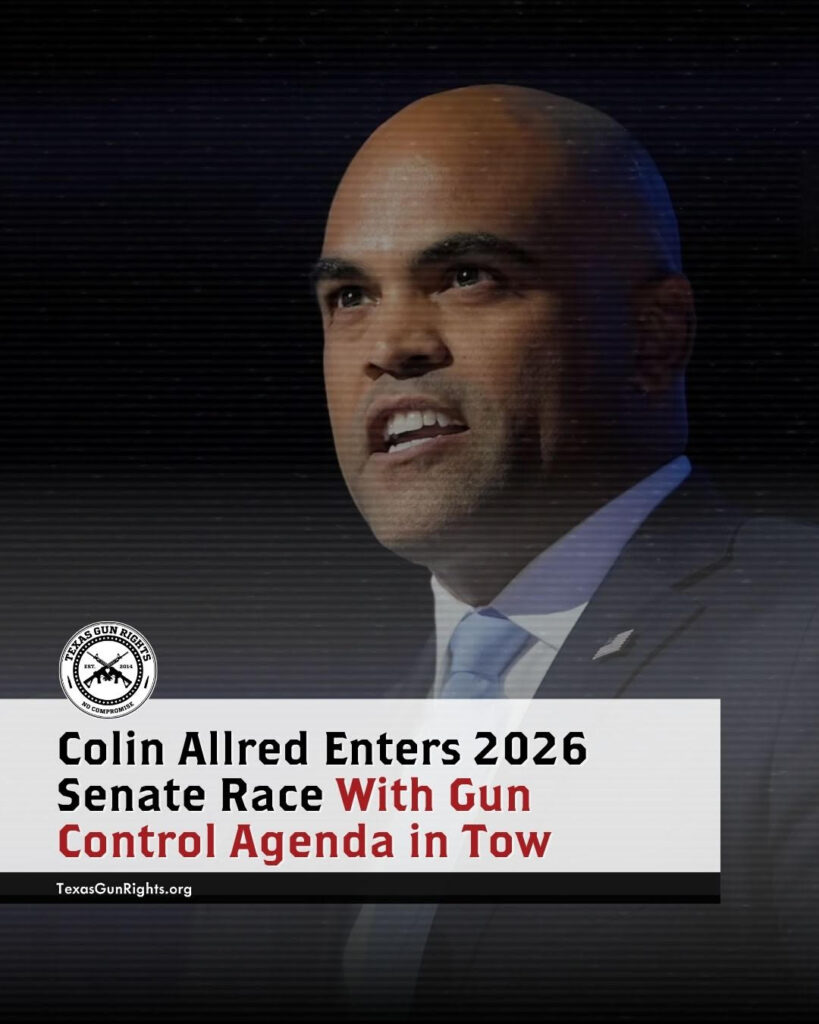
In a move that should set off alarm bells for gun owners across Texas, Democrat U.S. Representative Colin Allred has officially launched his campaign for U.S. Senate in 2026 — bringing with him one of the most radical anti-gun records of any Texas politician in Washington. Allred, a former NFL player turned Beltway bureaucrat, has […]
Trump’s DOJ Delivers Some Wins While Congress Betrays Gun Owners

While the Trump Administration is beginning to reverse some of the most egregious Biden-era attacks on the Second Amendment through executive action, Republicans in Congress are doing little more than waving from the sidelines — and gun owners across America have had enough. With the ATF walking back some rules and a constitutionalist trajectory reshaping […]
Final Passage of Trump’s Big Beautiful Bill Leaves NFA Gun Control Intact
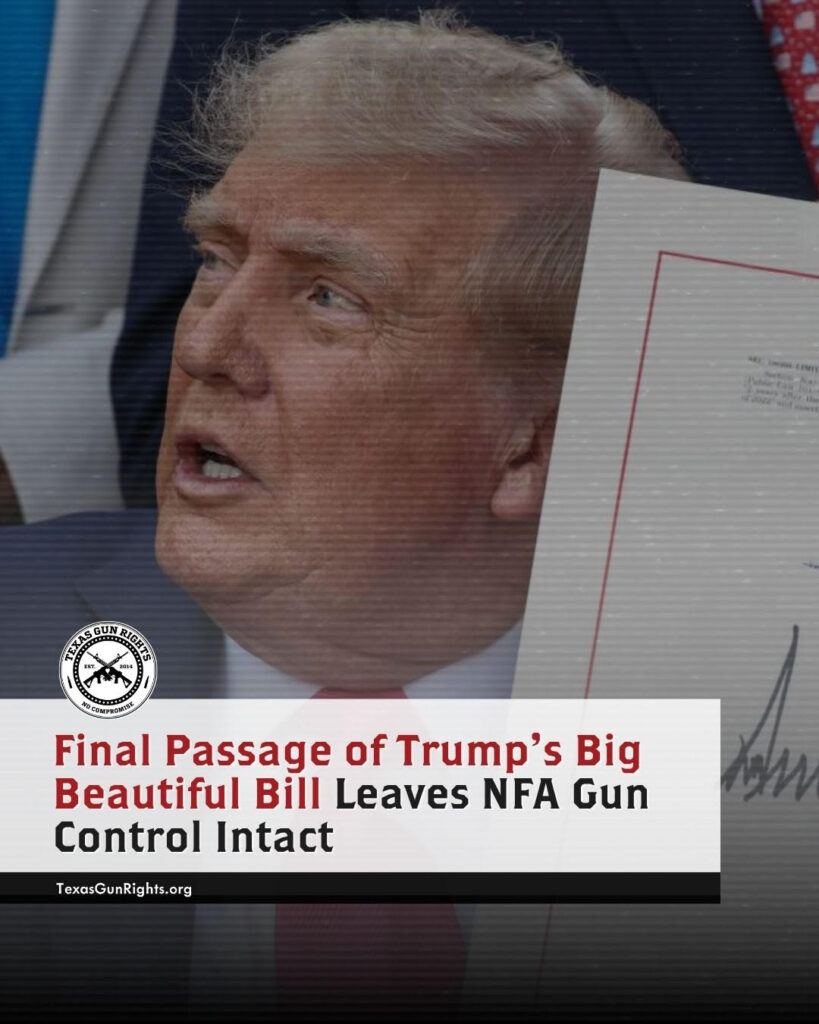
President Trump’s “Big Beautiful Bill” is headed to his desk, but Second Amendment advocates are sounding the alarm after House Republicans failed to restore key gun rights provisions stripped by Senate leadership under pressure from a Democrat-appointed parliamentarian. Though the bill eliminates the $200 tax on suppressors and short-barreled rifles (SBRs), it leaves the NFA’s […]
Dallas Judge Upholds Gun Ban at State Fair of Texas
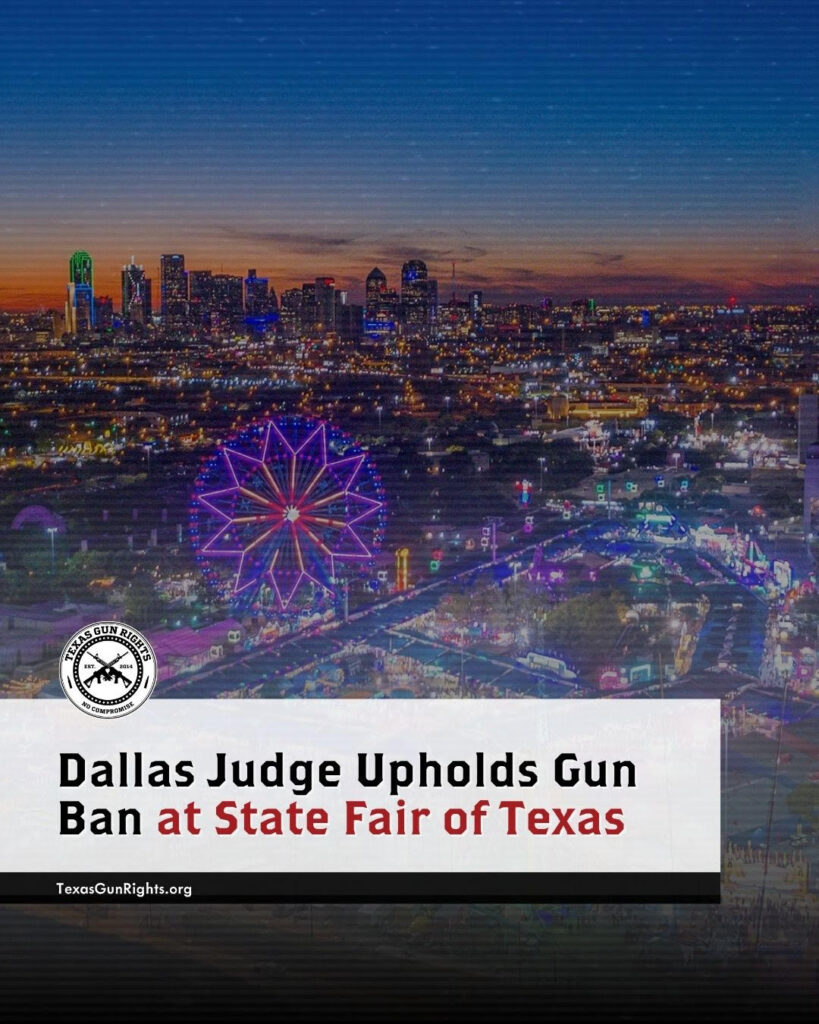
In a decision that has Texas gun owners fuming, a Dallas County district judge sided with the State Fair of Texas and the City of Dallas, upholding the controversial ban on firearms — including licensed concealed carry — at the publicly owned fairgrounds. Judge Emily Tobolowsky denied a motion for summary judgment brought by Attorney General Ken […]
Tragedy in the Hill Country: Texas Gun Rights Stands with Flood Victims

This past Independence Day was meant to be a celebration of freedom and family. But for the residents of the Texas Hill Country — and for many of us with deep roots in this land — July 4th, 2025, became a day marked by devastation, loss, and survival. The deadly flash floods that tore through […]
Veterans 2nd Amendment Protection Act Advances in House, Awaits Senate Action
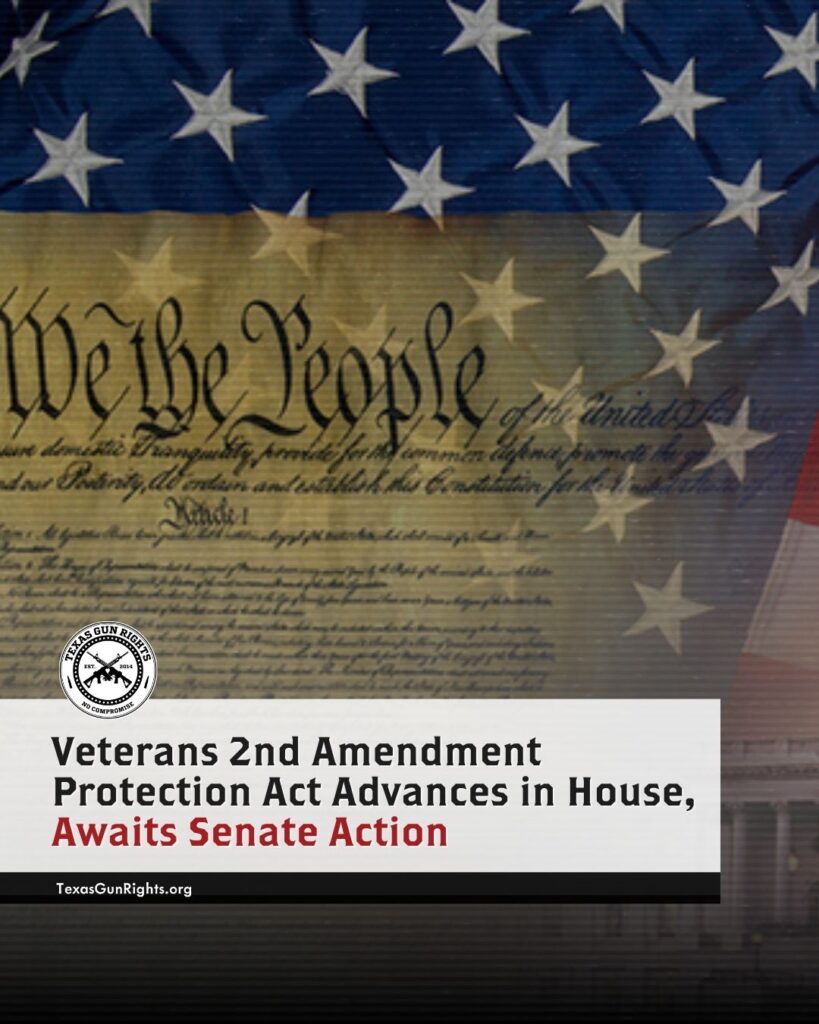
The U.S. House of Representatives took a major step toward restoring due process for America’s veterans by passing the Military Construction, Veterans Affairs, and Related Agencies Appropriations Bill (H.R. 3944) by a vote of 218–206 last week. Included in this appropriations package is language from the Veterans 2nd Amendment Protection Act (H.R. 1041), introduced by House Veterans’ Affairs Committee […]
AG Pam Bondi Defends Controversial ATF-DEA Merger Amid Bipartisan Backlash

In a move raising eyebrows across the political spectrum, U.S. Attorney General Pam Bondi is doubling down on the Biden-era Department of Justice’s controversial proposal to merge the Bureau of Alcohol, Tobacco, Firearms and Explosives (ATF) with the Drug Enforcement Administration (DEA) — despite near-universal opposition from both gun rights advocates and gun control groups. […]
Never Despair: An Independence Day Message from TXGR
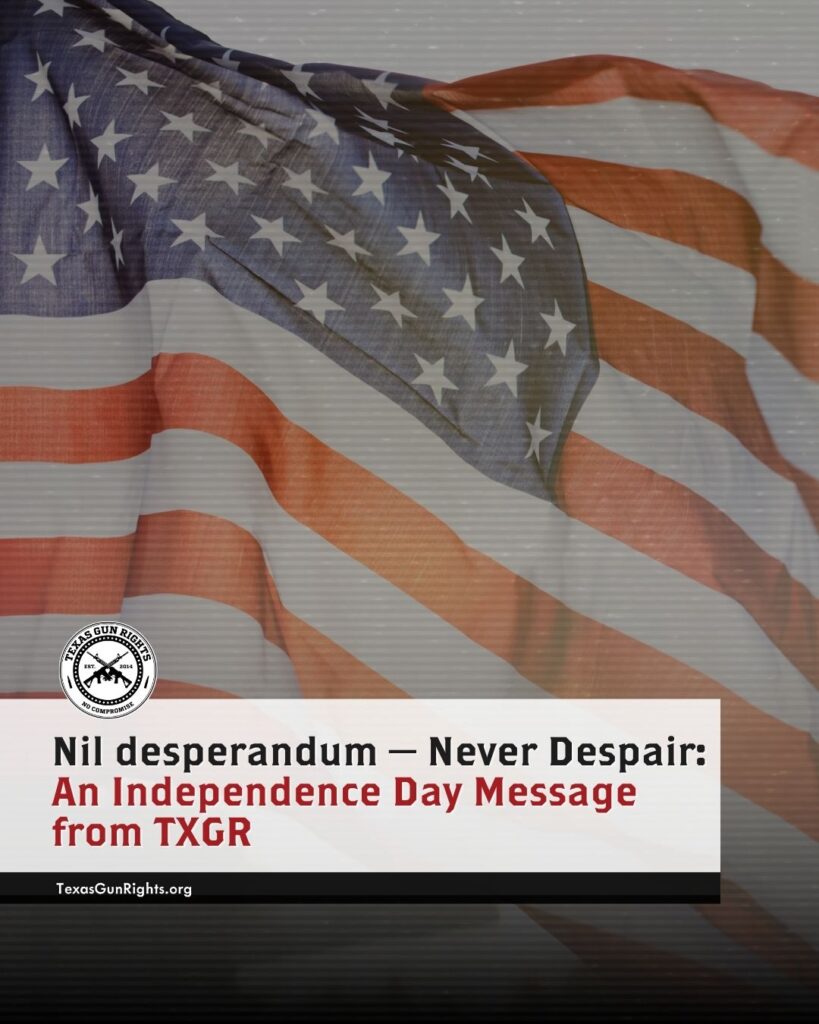
Fellow Patriots, As we prepare to celebrate our nation’s Independence Day, I want to offer two thoughts to encourage you — to help you celebrate not just where we’ve been, but to steel yourself for the battles still ahead to protect what is ours. The first thought is from one of my political mentors, Mike […]
Cornyn & Establishment Gun Lobby Caves by Backing Down on SHORT Act & HPA Fight
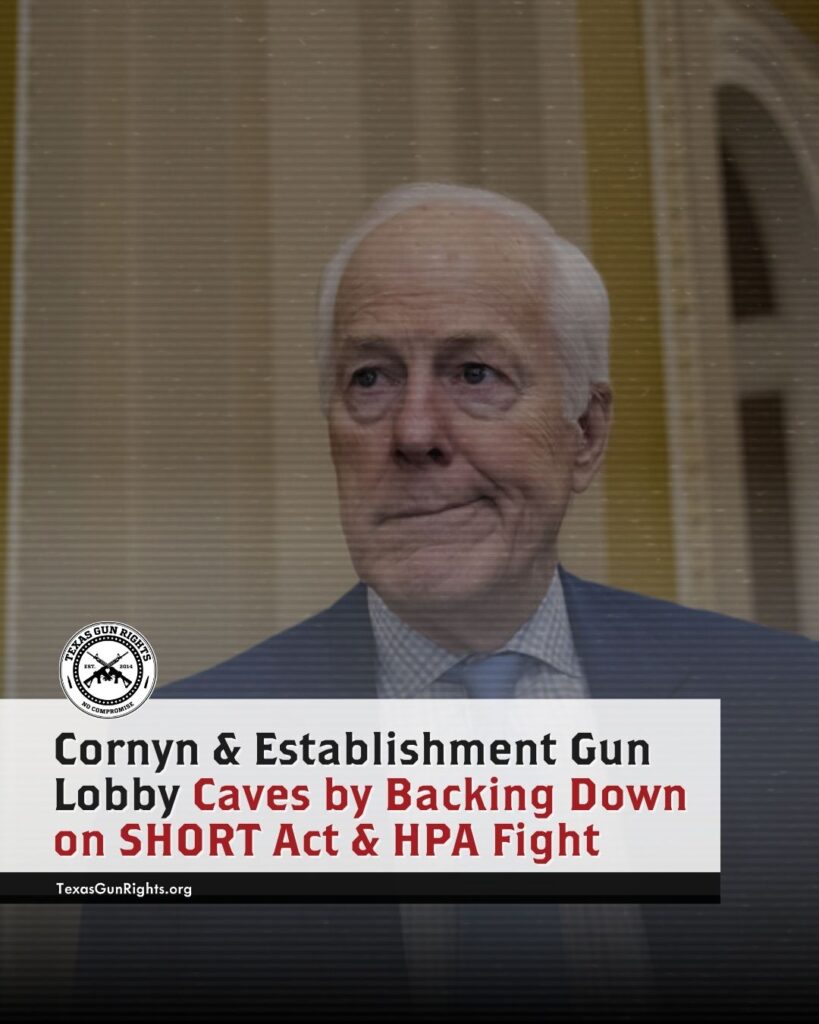
In a stunning betrayal of grassroots gun owners, the establishment gun lobby is throwing its weight behind a watered-down version of the “One Big Beautiful Bill (BBB),” abandoning the fight to fully repeal the National Firearms Act (NFA) provisions that restrict suppressors and short-barreled firearms. At the tip of the spear in this betrayal? Texas’s […]


